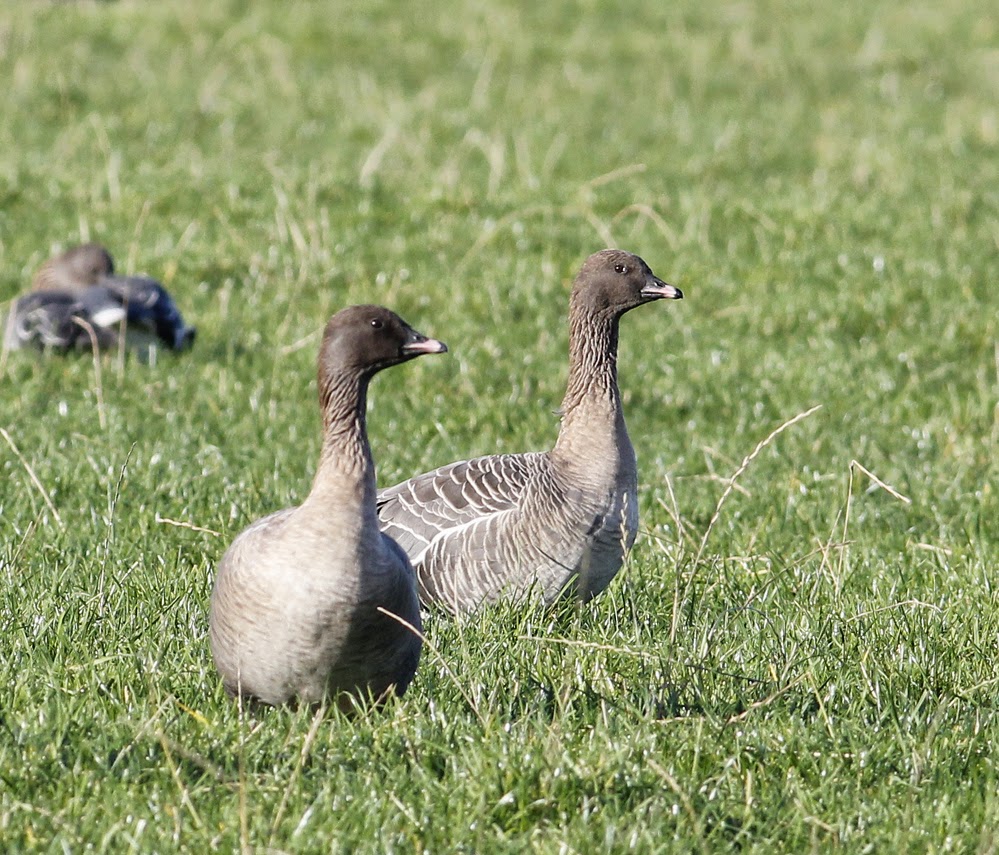Following a spot of bird ringing inland on Wednesday it was good to go birding along the familiar coast today. However the weather wasn’t too friendly with wind and intermittent showers so there’s not a lot to report.
I started off at Knott End for the incoming tide where the stiff north westerly made for cold hands and shaky optics. A far from complete count gave minima of 18 Eider and a single great Crested Grebe on the incoming tide. On the shore and near the jetty a mix of 1700 Oystercatcher, 700 Dunlin, 290 Redshank, 180 Knot, 145 Bar-tailed Godwit and 42 Turnstone.
The jetty hugging Turnstones can be relied upon to provide a few pictures, the other species out on the shore proving much harder to approach.
Turnstones
Knot
There was a flock of approximately 45 very flighty Twite. The birds were disturbed by a walker and then settled back down in the grassy marsh and out of sight. Two Pied Wagtails, 10 Goldfinch and 1 Rock Pipit also.
At Damside, Pilling approximately 1800 Pink-footed Geese occupied the same fields they recently adopted. I searched through the scattered flock for the oddities that occur, the best I could find today a rather obvious partly leucistic bird. Leucism which differs from albinism is caused by a reduction in pigment of a bird’s feathers. This particular pinkie seemed to be leucistic on one side of the body only and so much more obvious when facing one way rather than the other.
Pink-footed Goose
In the same field were approximately 120 Curlew, a couple of Oystercatchers and a single Black-tailed Godwit.
Black-tailed Godwit
I parked up at Fluke Hall and walked the wood and shore circuit. Through the wood a Nuthatch called and a Jay shrieked off as I interrupted its feeding time.
Along the shore, 12+ Little Egrets, 6 Whooper Swan, more Curlews, 140+ Shelduck, a Rock Pipit and a Stoat, Mustela ermine.
The Stoat was in an area where lots of Red-legged Partridge hang around. There’s no doubt a wily Stoat will help itself to more than a few of the shooters’ partridges in the course of the winter months.
Stoat
The human race often interferes with the natural world without fully studying the possible or likely consequences. In the 19th century, Stoats were introduced into New Zealand to control rabbits but the Stoats had a devastating effect on native bird populations. New Zealand has a high proportion of ground-nesting and flightless birds, due to the long geographical isolation and the lack of natural mammal predators. The introduced Stoats took full advantage of the bounty.
That’s all for today. Look in soon for more birds, birding and other tales from Another Bird Blog.
Linking today to Anni's Blog and Eileen's Saturday.
Linking today to Anni's Blog and Eileen's Saturday.





















































.jpg)












